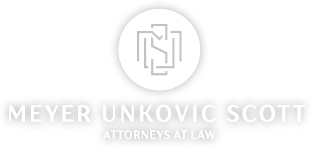Building owners in the City of Pittsburgh will be required to report energy and water usage for all non-residential buildings larger than 50,000 square feet. The Department of Innovation and Finance will collect this information and share it on a publically available online platform.
Beginning on June 1st, “owners” of “covered buildings” must submit complete building energy usage, water usage, and other required building characteristics and use attributes to the City using the EPA’s Energy Star Portfolio Manager. The ordinance defines an “owner” as an individual or entity possessing title to a covered building or a net lessee of a covered building subject to a triple net lease. A “covered building” includes both non-residential buildings with indoor floor space of 50,000 square feet or more and all non-residential portions of any mixed-use building where at least 50,000 square feet of indoor floor space is devoted to non-residential use.
A covered building owner who complies with the benchmarking requirements will be designated on the City’s online platform as “participating.” A covered building owner who fails to report the required benchmarking information will be designated as “eligible and non-participating.”
April 2nd is the deadline for owners of covered buildings to file for a benchmarking exemption. An exemption granted in 2018 is valid only for 2018 and does not entitle the owner for exemptions in previous and later years. An exempted covered building owner will be described as “exempted” on the City’s online platform. An exemption request must be substantiated by documentation and demonstrate any of the following criteria:
- The covered building has no certificate of occupancy or temporary certificate of occupancy for all twelve months of the calendar year being benchmarked.
- A demolition permit has been issued for the covered building during the calendar year being benchmarked, provided that no demolition work has commenced, energy related systems have been compromised, and legal occupancy is no longer possible prior to June 1.
- The covered building had average physical occupancy of less than 50% throughout the calendar year being benchmarked.
- The Department determines that, due to special circumstances unique to the covered building and not based on a condition caused by actions of the owner, applicant or operator, strict compliance would cause undue hardship or would not be in the public interest.
- The covered building is primarily used for manufacturing or other industrial purposes for which benchmarking results would not meaningfully reflect the covered building’s energy use characteristics due to the intensive use of process energy; or
- The owner cannot benchmark due to the failure of either a utility or tenant (or both) to provide the information necessary for the owner to complete any benchmarking submittal requirement.
For more information about benchmarking requirements and exemptions, or any other Real Estate matter, please contact any of Meyer, Unkovic & Scott’s
Real Estate & Lending Practice Group attorneys with whom you may have worked.

